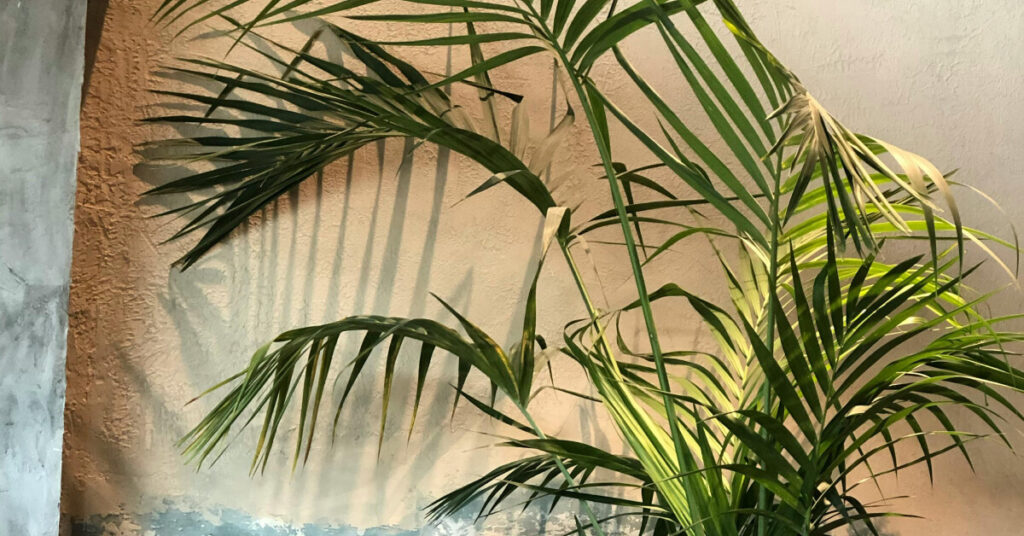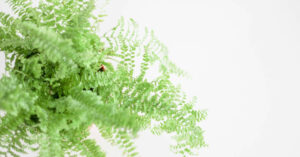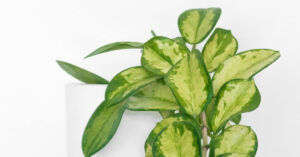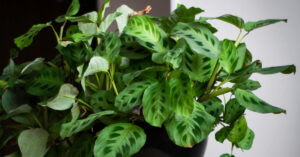Howea forsteriana
Kentia Palm is a slow-growing tropical palm known for its graceful, arching fronds and upright, understated elegance. Native to Lord Howe Island off the eastern coast of Australia, it’s a classic choice for adding vertical greenery and a relaxed tropical feel to interiors without overwhelming a space.
Resilient, shade-tolerant, and stylish, the Kentia Palm adapts well to indoor conditions and makes a refined statement in living rooms, offices, and open-plan spaces.
Light Requirements
Kentia Palm thrives in bright indirect light but tolerates lower light better than most palms. It performs best near a window with filtered sunlight. While it can grow in partial shade, low light may slow its already gradual growth and lead to sparse fronds.
Avoid placing it in direct sun, which can scorch the fronds, especially during the hottest part of the day.
Watering
Water when the top 1 to 2 inches of soil feel dry. Kentia Palm prefers moderate moisture but is sensitive to overwatering and root rot. In spring and summer, water roughly every 7 to 10 days depending on light and humidity. In winter, reduce frequency.
Always allow excess water to drain completely. The plant’s roots dislike sitting in soggy soil, so use pots with drainage holes and empty saucers after watering.
Soil Type
Use a well-draining indoor potting mix, ideally one that contains peat, perlite, and some organic matter. A mix designed for palms or a standard houseplant mix with added perlite is ideal.
Avoid dense or moisture-retentive soil, which can trap water and suffocate roots.
Temperature
Kentia Palm thrives in temperatures between 65 and 80°F (18 to 27°C). It is sensitive to cold drafts and should be kept away from open windows, exterior doors, or air conditioning units during colder months.
Temperatures below 50°F (10°C) may cause leaf yellowing or stress. It prefers stable conditions without sharp temperature fluctuations.
Humidity
This palm prefers medium to high humidity. While it tolerates typical indoor humidity levels, dry air—especially in winter—can lead to browning leaf tips.
To maintain good humidity:
-
Mist the leaves occasionally
-
Use a humidifier nearby
-
Place on a pebble tray with water
-
Group with other humidity-loving plants
Fertilizing
Feed every 6 to 8 weeks during spring and summer using a balanced liquid fertilizer or a formula designed for palms. Dilute to half strength to prevent overfeeding.
Do not fertilize in fall or winter when growth slows. Avoid high-salt fertilizers, which can burn the roots.
Growth Habit and Size
Kentia Palm grows upright with arching, feather-like fronds that can reach 6 to 10 feet tall indoors over time. It’s a slow grower but becomes more dramatic with age. Its tidy form makes it ideal for floor placement in bright corners or near furniture.
The plant typically grows a single trunk and does not require pruning for shape. New fronds emerge slowly from the center of the plant.
Pruning and Maintenance
Kentia Palms require minimal pruning. Only remove completely brown or damaged fronds by cutting them near the base with clean scissors or shears. Do not cut healthy green fronds, as this can weaken the plant.
Dust the fronds occasionally to keep them clean and allow maximum light absorption.
Avoid frequent repotting. The plant grows best when slightly root-bound and may only need repotting every 3 to 4 years.
Common Problems and Solutions
Brown tips on fronds
Often caused by low humidity or dry indoor air. Increase humidity and avoid letting the soil fully dry out.
Yellowing leaves
Usually due to overwatering or poor drainage. Let the soil dry more between waterings and ensure your pot drains well.
Slow growth
Normal for Kentia Palm, especially in low light. Provide brighter conditions and feed sparingly during growing months.
Pest issues
Occasionally affected by spider mites or mealybugs in dry environments. Wipe fronds clean and treat with insecticidal soap if needed.
Pet and Child Safety
Kentia Palm is non-toxic to cats, dogs, and humans, making it a safe and attractive choice for homes with pets and children. While not edible, it poses no known risk if touched or accidentally chewed.
Why Kentia Palm Is the Ideal Indoor Statement Plant
Kentia Palm offers a low-fuss way to bring natural elegance indoors. Its slender upright form, arching fronds, and adaptability to indoor light and humidity make it a favorite for those seeking a taller houseplant that stays visually clean and manageable.
Whether you’re filling an empty corner, softening a modern room, or building a calming plant-filled space, Kentia Palm adds a gentle, architectural presence that suits nearly any home style.




